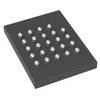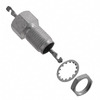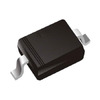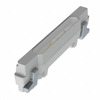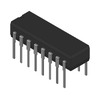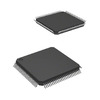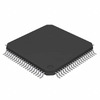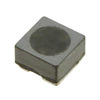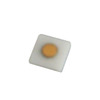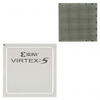Driving Motion: A Comprehensive Guide to Actuators
What’s driving this symphony of mechanical motion? At the heart of it all are actuators—unsung heroes that convert different forms of energy into tangible movement, making machinery come to life. Whether it's the steady, controlled lift of an excavator's arm or the intricate movements of a robotic hand, actuators are the main components that transform potential energy into dynamic action. In this article, we’ll delve into the fascinating world of actuators, exploring their types, applications, and the roles they play in industries ranging from manufacturing to healthcare.Catalog
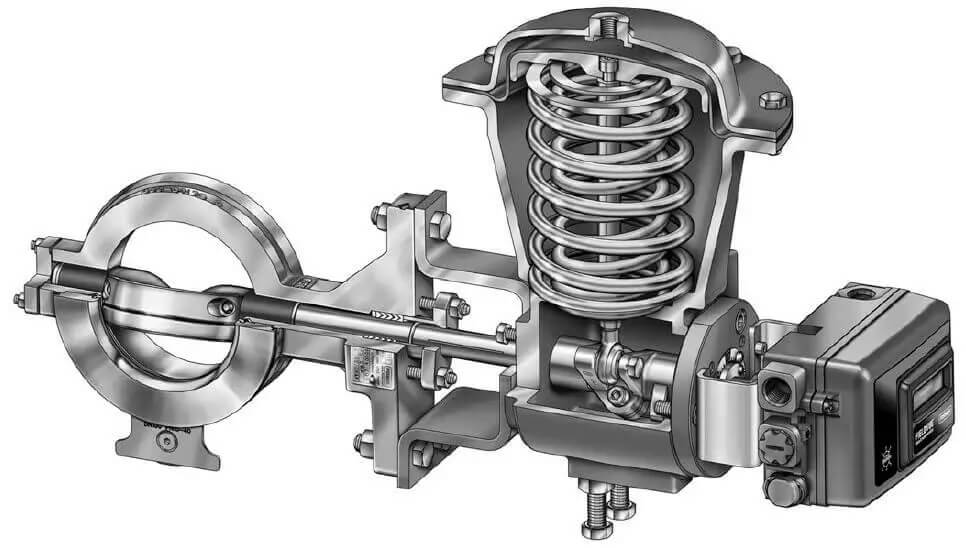
Figure 1: Actuators
What Are Actuators?
Actuators play a major role in modern machinery, transforming different types of energy into physical force or mechanical motion. Simply put, they are the parts that bring machines or objects to life by converting potential energy into actual movement. Actuators need a control signal and an energy source, which can be electrical power, hydraulic fluid pressure, or pneumatic pressure. These devices are needed in automation and control across various industries. It allows everything from simple linear motions to intricate rotational movements. They are used in countless systems, including industrial machinery and everyday consumer devices.
Different Types of Actuators
Actuators can be categorized by their motion and the type of input energy they require for operation.
Actuators Based on Motion
When categorized by motion, actuators fall into two main types: linear actuators and rotary actuators.
Linear Actuators
Linear actuators are designed to produce motion in a straight line with a simple push-and-pull mechanism. Examples include push-pull solenoids and hydraulic cylinders.
They offer several significant advantages. They provide highly accurate and repeatable linear motion in various tasks. This precision is especially important in robotics and industrial automation, where even minor deviations can impact performance.

Figure 2: Linear Actuators
Linear actuators are also known for their robustness and durability. It capable of handling high loads and harsh operating conditions without compromising performance. They come in various sizes and configurations. That allows for easy customization to meet specific application needs.
These advantages highlight why linear actuators are a go-to solution for tasks demanding reliable and precise linear movement.
In construction, they operate heavy machinery like excavators and bulldozers. This type of actuator allows these machines to lift and move heavy loads accurately and powerfully.
In robotic application, linear actuators control the movement of robotic arms. It provides the precision needed for tasks ranging from assembly line work to delicate surgical procedures.
Industrial automation relies on linear actuators for tasks such as managing conveyor belts, adjusting machinery settings, and overseeing automated production lines.
Renewable energy systems – linear actuators adjust the angles of solar panels for optimal energy absorption. The versatility and reliability of linear actuators make them indispensable across various sectors.
Disadvantages of Linear Actuators
Despite their many strengths, linear actuators have some drawbacks. One disadvantage is their potential for limited speed compared to other types of actuators, such as pneumatic or electric rotary actuators. This limitation can affect their suitability for applications requiring rapid movement or high-speed operations.
Linear actuators can be more expensive than other options, particularly when advanced features or high precision are required.
Their mechanical components can also be prone to wear and tear over time. Thus, there’s a need of regular maintenance and potential replacements. That can increase long-term operational costs. Precise alignment during installation is necessary to ensure optimal performance, which can complicate the setup process.
These disadvantages highlight the importance of carefully evaluating the specific requirements and constraints of each application to determine whether a linear actuator is the best choice, balancing its benefits against its limitations.
Rotary Actuators
Rotary actuators create mechanical torque around a fixed point which allow rotational motion. Electric motors are the most common type, efficiently converting electrical energy into rotational energy. Rotary actuators are also durable and robust. Thus, capable of handling high loads and harsh conditions without losing effectiveness.
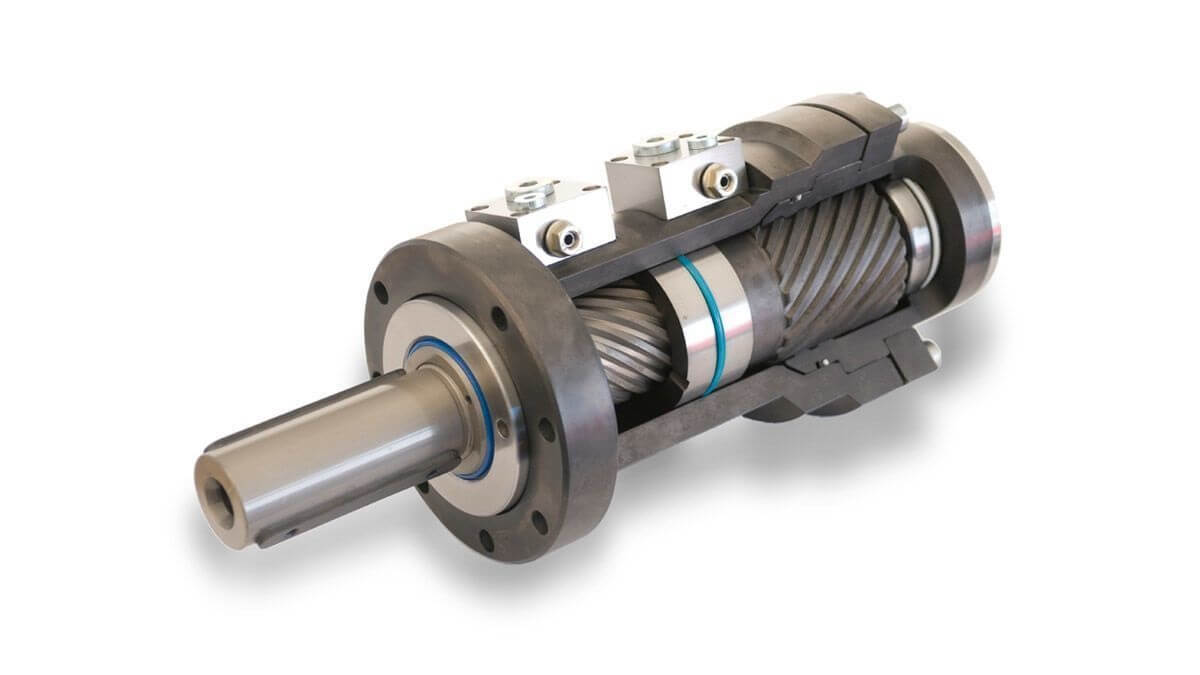
Figure 3: Rotary Actuators
These actuators are used for applications requiring continuous rotation, such as conveyor belts and robotic joints. Their reliable and consistent rotation is important in automation, manufacturing, and robotics. In this application, precise control of movement is needed for optimal performance and efficiency.
Manufacturing - rotary actuators drive conveyor belts, ensuring products move smoothly along production lines.
Robotics - rotary actuators power joints and arms. They provide the precise movements necessary for tasks ranging from assembly to intricate surgical procedures.
Automotive industry uses rotary actuators for functions like power steering and electric windows, where controlled and consistent motion is needed.
Aerospace - Rotary actuators control flaps and other moving parts on aircraft. They help in precise maneuvering and guaranteeing safety. The versatility of rotary actuators makes them indispensable in any application requiring controlled rotational movement.
Disadvantages of Rotary Actuators
Rotary actuators generate heat during operation. Thus, additional cooling systems is needed to prevent overheating and guarantee continuous function. That will add complexity and cost. Rotary actuators are less efficient in applications requiring linear motion, as converting rotational to linear motion can introduce inefficiencies and reduce overall performance.
They can also be more expensive than simpler mechanical solutions. Over time, moving parts can wear out, leading to maintenance issues and potential system failures, increasing long-term operational costs.
Actuators Based on Input Energy
The classification of actuators by input energy encompasses several types, each suited for different applications and environments.
Electrical Actuator
Electrical actuators convert electrical energy, whether AC or DC, into mechanical torque or linear motion. This group includes devices like servo motors and various AC/DC motors.
They are prized for their ease of control, long lifespan, and high efficiency. Their reliability and long operational life reduce the need for frequent maintenance and replacement. Thus, lowering operational costs over time.
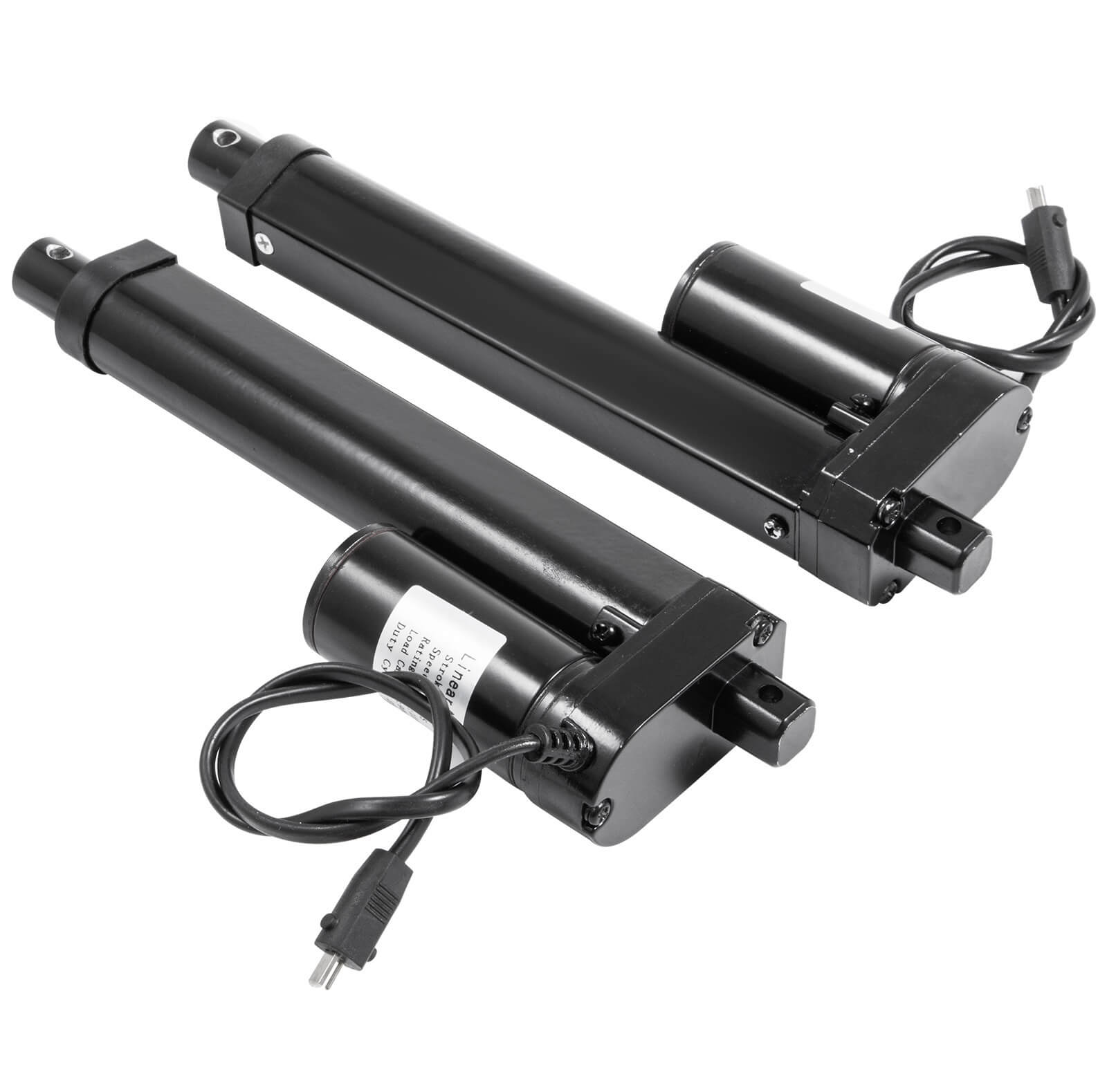
Figure 4: Electrical Actuator
Electrical actuators integrate easily with advanced control systems. Thus, they provide significant flexibility in automation and smart technology setups.
Aside from that, electrical actuators have quiet operation compared to hydraulic and pneumatic actuators. Hence, they are suitable for noise-sensitive environments.
Electrical actuators deliver precise rotational output with a high power-to-weight ratio and fewer moving parts than other actuators. This design boosts efficiency, simplifies maintenance, and reduces failure points.
Their performance makes them widely used across numerous industries.
Industrial automation - they excel at tasks needing precise control, such as adjusting valves, positioning machine components, and operating conveyor belts. This precision boosts productivity and ensures smooth operation of complex processes.
The robotics industry relies on electrical actuators to drive robotic arms and mechanisms. That allow for precise movements needed for tasks from assembly to surgery.
Automotive sector - electrical actuators are used for functions like power windows and seat adjustments. That will improve user convenience and vehicle functionality.
Aerospace – Electrical actuators control flight surfaces and manage landing gear operations. They ensure safety and precision.
Consumer electronics - They are also integral to consumer electronics, including adjustable desks and smart home devices. Electrical actuators highlight their adaptability and important role in modern technology.
Disadvantages of Electrical Actuators
They often have a higher initial cost, especially for high-power applications. Their complex control systems require specialized knowledge for installation, operation, & maintenance. Thus, it will increase labor costs and needs of highly skilled technicians.
They are not ideal for all environments, posing risks in hazardous or flammable areas due to potential sparks from electrical components. Extreme temperatures and harsh conditions can compromise their performance. It will limit their use in certain industrial settings.
Electric Linear Actuators
Electric linear actuators convert electrical energy into linear motion. They come in two main types: solenoid actuators and actuators that convert rotary motion into linear motion through mechanical systems. Solenoid actuators provide direct linear motion, while the latter use a motor to create rotational motion, which is then transformed into linear motion via gears & drive mechanisms.
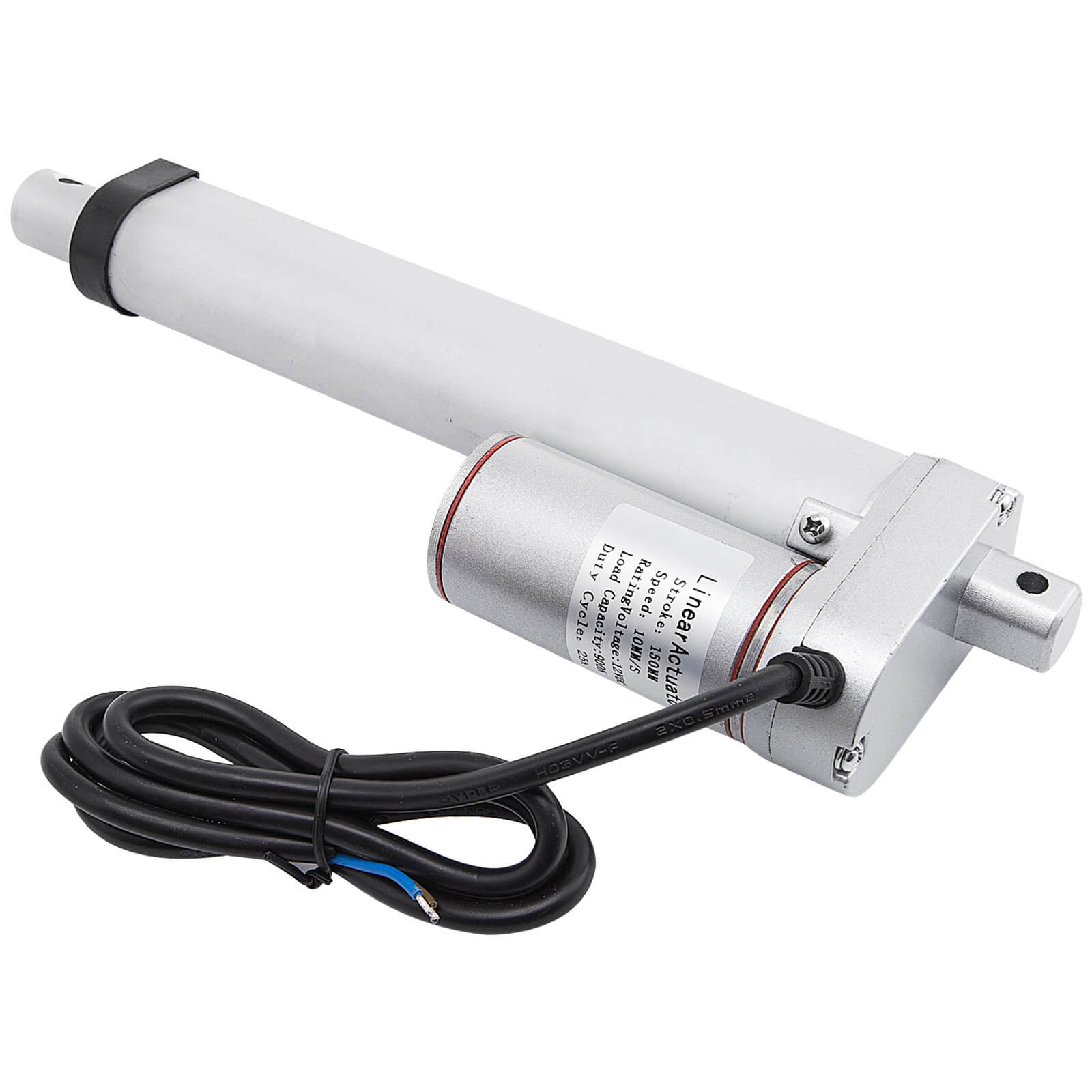
Figure 5: Electric Linear Actuators
Electric linear actuators offer unmatched precision in applications requiring exact positioning and controlled movements. They are modular and scalable that allows for customization to meet specific force requirements. Electric linear actuators also designed to operate effectively in extreme conditions, making them suitable for harsh industrial environments. Their simple construction facilitates easy repair and enhances reliability. The absence of oil and fluids increases durability and reduces maintenance issues common with hydraulic systems. Plus, they produce less noise, thus, they are perfect for noise-sensitive environment.
Electric linear actuators are used for a wide range of applications.
In power plants & oil and gas facilities, they control valves and pumps with high accuracy.
These actuators are also used in domestic settings, such as in solenoid-actuated doorbells and automatic doors to improve everyday convenience.
The automotive industry utilizes them for electronically operated power windows, providing reliable and smooth operation. The adaptability and functionality of electric linear actuators make them functional in both industrial and domestic settings.
Disadvantages of Electric Linear Actuators
Despite their benefits, electric linear actuators have some drawbacks. They also have a higher initial cost. That can be a limiting factor for budget-conscious projects. Their control mechanisms are complex, requiring advanced systems. Maintenance and repair demand highly skilled personnel, increasing operational costs. They are unsuitable for hazardous and flammable environments due to the risk of ignition from electric motors.
Hydraulic Actuator
Hydraulic actuators use a cylinder or fluid-based motor to convert hydraulic fluid pressure into mechanical actions. They generate both linear and rotary motions by using incompressible fluids, such as oil, to move pistons within a cylinder. By adjusting the fluid pressure, the actuator's speed and force can be precisely controlled.
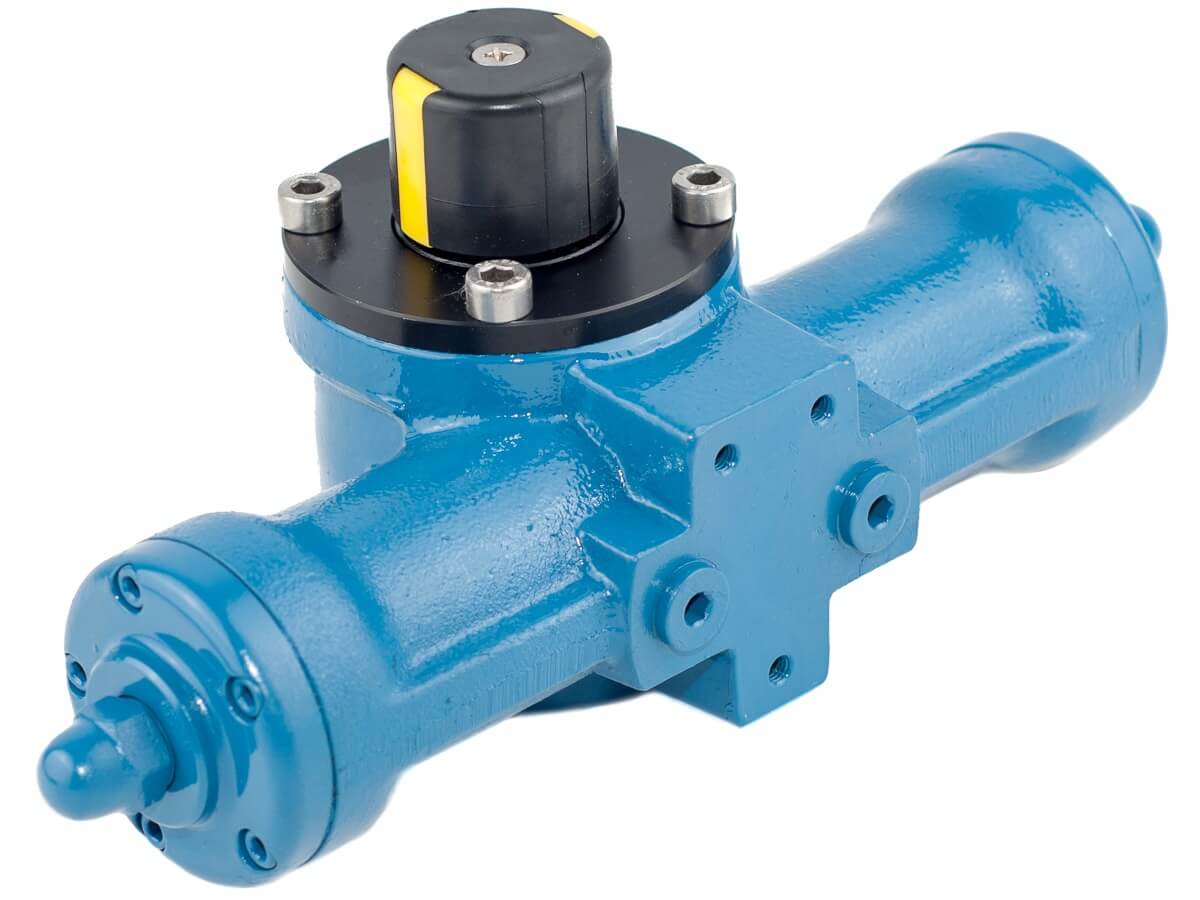
Figure 6: Hydraulic Actuator
They maintain constant force without continuous energy input, leveraging the properties of incompressible fluids. Once a force is applied, the actuator can hold it steady without needing additional power from the pump, enhancing energy efficiency in static load scenarios.
Known for their immense power and durability, hydraulic actuators are utilized in heavy machinery and industrial settings. In this applications, significant force and precise control are needed. Their robust construction allows them to handle heavy loads and harsh conditions.
In construction, hydraulic actuators are key components in heavy machinery such as excavators and diggers. They allow accurate operation and powerful manipulation of heavy loads.
In the automotive sector, hydraulic actuators are common in braking systems and suspension setups. They provide consistent and reliable force for critical safety components.
In industrial machinery, hydraulic actuators are used for tasks requiring significant power and precision, such as metal forming and plastic molding. Their capacity in handling large forces guarantee that they remain vital in many sectors.
Disadvantages of Hydraulic Actuators
High maintenance costs are an issue due to the complexity of hydraulic systems, including reservoirs, pumps, release valves, and heat exchangers. Regular maintenance and monitoring are necessary, leading to increased operational costs. Leaks in the hydraulic fluid can reduce efficiency and pose environmental hazards. If not properly contained and managed, hydraulic fluids can harm the environment.
Aside from that, hydraulic actuators are not ideal for extreme temperatures, as the properties of hydraulic fluid can change with temperature, affecting performance. This variability can compromise reliability in environments with fluctuating or extreme temperatures, requiring additional precautions and maintenance efforts.
Pneumatic Actuator
Pneumatic actuators function similarly to hydraulic actuators but use compressed air or vacuum instead of liquid to create mechanical motion. By converting gas pressure into mechanical force, these actuators generate linear or rotary motion. They generate substantial forces with relatively small pressure changes.
Popular for their simplicity, speed, and cleanliness, pneumatic actuators are ideal for applications requiring quick and reliable motion. In automation and manufacturing, pneumatic actuators deliver rapid and consistent movements. Their rapid response times is beneficial for processes requiring swift, repeatable actions. These actuators improve operational reliability in modern industrial systems.
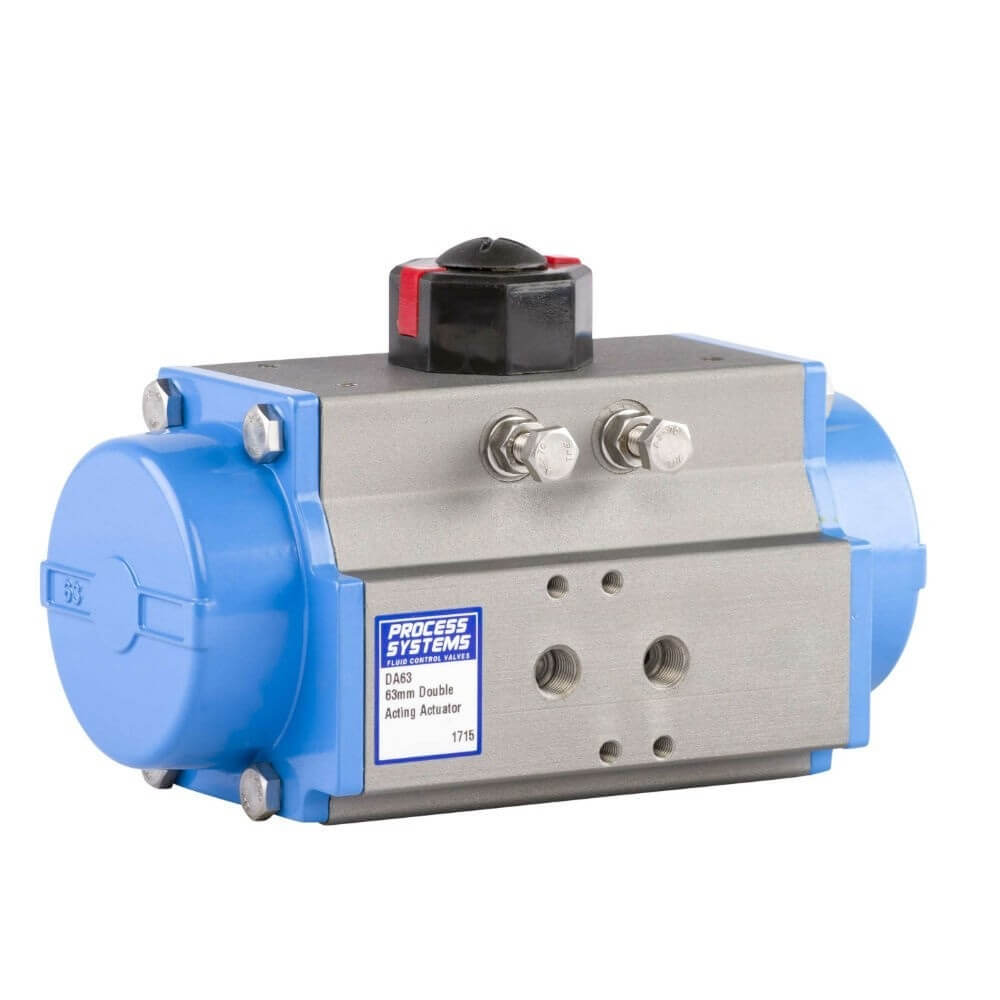
Figure 7: Pneumatic Actuator
Pneumatic actuators are also less expensive to build and operate than electrical and hydraulic actuators. It offers a cost-effective option for various applications. Despite their lower cost, they can produce higher power output than their electric or hydraulic counterparts.
This type of actuators are highly suitable for extreme temperatures and hazardous conditions. It uses air as a medium which is safer than chemicals or electricity. Thus, these actuators are ideal for environments where safety is a major concern.
Pneumatic actuators have many types such as rack and pinion actuators. These actuators are used for valve control operations. They provide precise control over valve positions in industries such as oil and gas, water treatment, and chemical manufacturing. In the automotive industry, pneumatic actuators are extensively used in pneumatic brakes to improve safety and performance. Beyond these applications, pneumatic actuators are found in automation systems, robotics, and packaging machinery.
Disadvantages of Pneumatic Actuators
Despite their strengths, pneumatic actuators have some drawbacks. One issue is the need for constant compressor operation, even when idle, due to pressure losses and air compressibility, causing power loss. This leads to increased energy consumption and higher operational costs. Small leaks in pneumatic systems are harder to detect compared to hydraulic systems, potentially causing inefficiencies and maintenance issues. Contamination of the air reservoir with oil, lubrication, or other gases can alter the power output. That will result in downtime and need of maintenance. Regular monitoring and maintenance will ensure optimal performance and efficiency.
Magnetic Actuators
Magnetic actuators operate on the principle of Lorentz forces. A magnetic field generated by a current-carrying conductor interacts with a static magnetic field, creating a force that moves a mechanical structure.
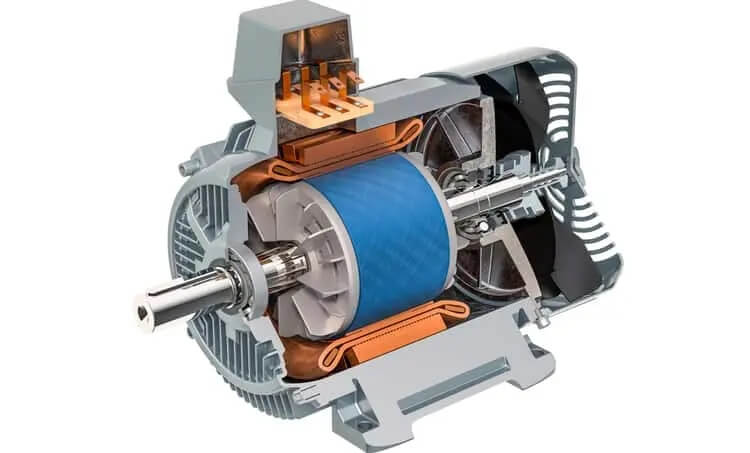
Figure 8: Magnetic Actuators
These actuators are ideal for specialized applications, such as nano-robots and biomedical devices, due to their compact size and ability to function without physical contact. Their non-contact nature reduces wear and tear. That enhance longevity and reliability, & minimizes friction and mechanical fatigue.
Magnetic actuators are also used extensively in precision instrumentation. They provide controlled, accurate movements without physical wear.
In the aerospace industry, magnetic actuators contribute to exact positioning in sophisticated control systems for aircraft and spacecraft.
In high-tech manufacturing, they improve product quality and production efficiency through consistent and reliable motion control. The precision of magnetic actuators makes them invaluable in applications requiring meticulous control and reliability.
Disadvantages of Magnetic Actuators
Magnetic actuators are high in cost, due to the advanced materials and technologies required for their construction. This can make them less accessible for cost-sensitive applications. This actuator often requires complex control systems for precise movements, complicating their implementation and increasing maintenance demands. They are also sensitive to external magnetic fields, which can interfere with their operation. Thus, they are less suitable for environments with significant electromagnetic interference.
Aside from that, while magnetic actuators excel in small-scale and precise applications, they may not be suitable for tasks requiring high power output or large force generation. These limitations mean that while magnetic actuators are highly effective in specific, controlled environments, they may not be the best choice for general or heavy-duty industrial applications.
Mechanical Actuators
Mechanical actuators are devices that change one type of motion into another using components like gears, chains, and pulleys. They are often combined with other actuators to increase torque or power output or to switch between linear and rotary motion.
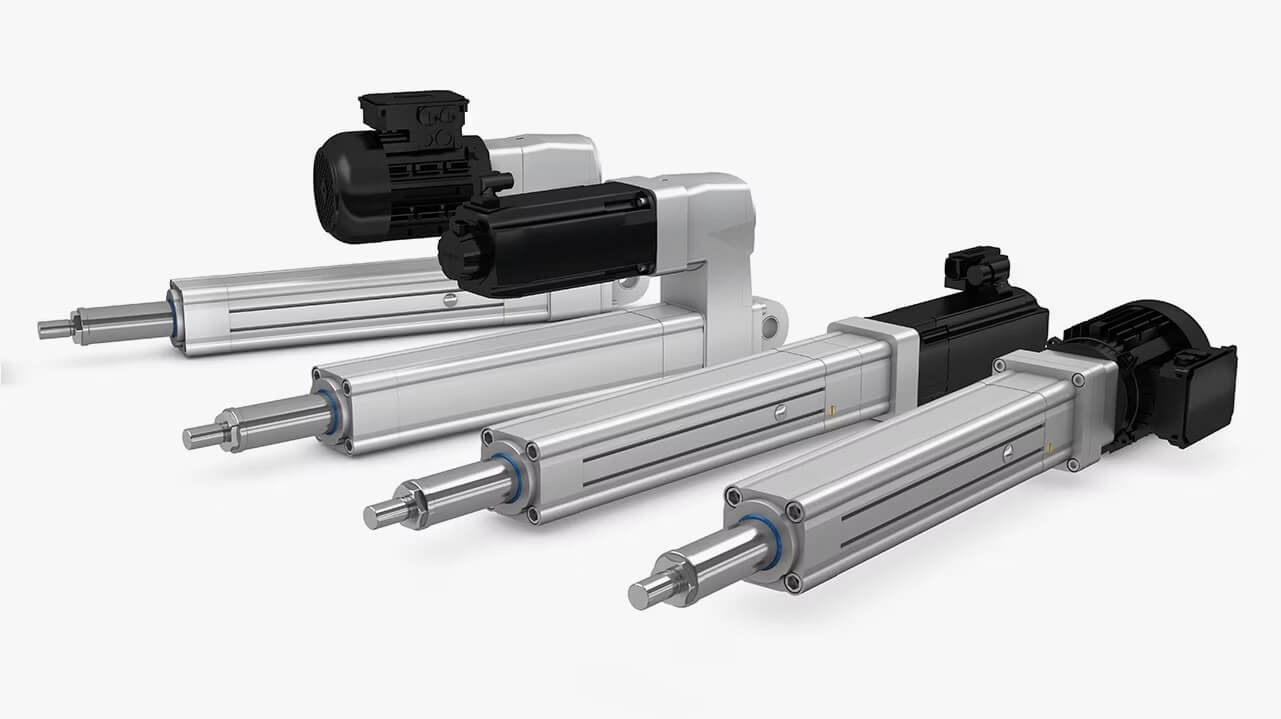
Figure 9: Mechanical Actuators
These actuators are used for machinery that requires mechanical advantage and precise motion control. In industrial automation, for example, they turn the rotational motion of a motor into the linear movement needed for conveyor belts or robotic arms. This allows for accurate positioning and movement of heavy loads with minimal input force, improving efficiency & performance.
In automotive systems, mechanical actuators translate the driver's input into the movement of various vehicle components, such as steering and braking systems. They are designed to handle high loads and harsh conditions to guarantee long-term functionality and reduce maintenance needs.
Disadvantages of Mechanical Actuators
One major issue is wear and tear on moving parts like gears and pulleys, leading to maintenance problems & potential system failures. Regular maintenance is necessary, which can be time-consuming and costly. Mechanical actuators are less flexible in speed and force adjustments compared to hydraulic and electrical actuators, limiting their use in applications requiring variable motion profiles. They can also be bulky and heavy - less suitable for applications where space and weight are important. Mechanical systems often require precise alignment and calibration, complicating installation and operation.
Thermal Actuators
Thermal actuators are devices made from materials like metals or shape memory alloys that change shape when heated. This shape change creates linear motion.
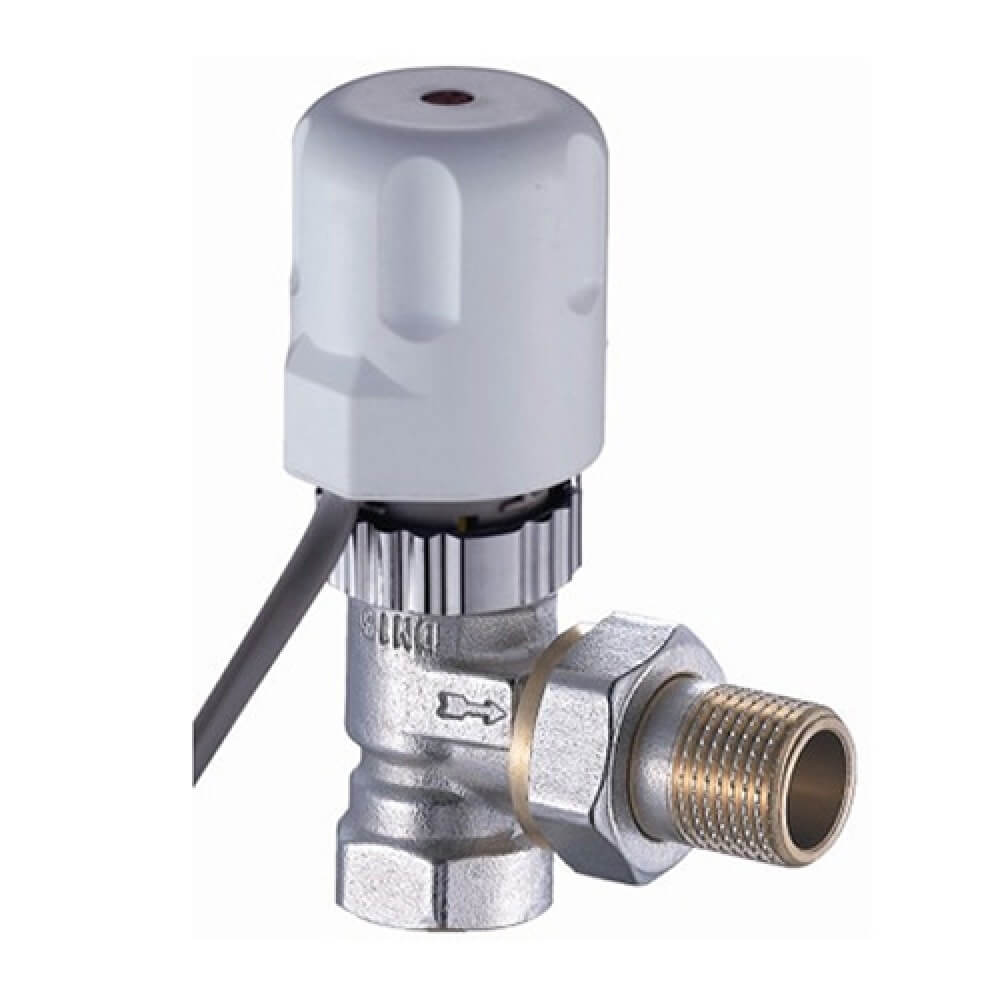
Figure 10: Thermal Actuators
These actuators have several key advantages. Because they are compact and lightweight, they are widely used in temperature control. Their compact size allows for easy integration into various systems without adding bulk. They are also reliable, providing precise motion without needing complex electronics. This makes them energy-efficient and less likely to fail compared to electronic components. Thermal actuators can operate effectively during power outages, adding reliability in heavy applications.
Disadvantages of Thermal Actuators
One disadvantage is their response time; relying on temperature changes to activate, they may not respond as quickly as electronic actuators in situations requiring immediate action.
Thermal actuators have a limited range of motion compared to other actuators, restricting their use in applications requiring extensive movement. Extreme environmental conditions can also affect their performance. Very high or low ambient temperatures can impact the actuator’s materials, reducing their effectiveness and lifespan.
Plus, thermal actuators can be less precise in applications where fine-tuned control over movement is necessary, as their motion is directly linked to temperature changes, which can fluctuate.
Soft Actuators
Soft actuators, made from flexible polymers, are perfect for tasks requiring a gentle touch and precise movements. They are particularly useful in medicine, helping doctors handle internal organs safely during surgery.
In farming, they can pick fruits without bruising them and maintaining the quality of the produce. These actuators are lightweight and often biodegradable. Thus, a perfect part which is eco-friendly and easy to use in various settings. They are very versatile which can respond to light, heat, and pH changes.
Soft actuators adaptability to different shapes and textures allows them to handle delicate items in manufacturing, such as assembling fragile electronics or packaging sensitive products.
Disadvantages of Soft Actuators
Soft actuators have lower strength and durability compared to traditional actuators made from rigid materials. They can also be sensitive to environmental conditions, such as extreme temperatures or exposure to certain chemicals. That can affect their performance and lifespan.
The materials used in soft actuators may degrade over time, especially under harsh conditions. That can lead to more frequent replacements and maintenance.
Their responsiveness to various stimuli, while advantageous in many scenarios, can be a drawback if not properly controlled, potentially causing unintended movements or adjustments.
Choosing the Right Actuator for Your Needs
Selecting the right actuator involves evaluating three key factors: the power source, the type of movement required, and the level of precision needed.
Evaluate the Power Source
First, consider the available power source. If you have easy access to electricity, electric actuators are often the best choice due to their efficiency and precise control. However, in environments where electricity is limited, hydraulic or pneumatic actuators might be more appropriate.
Determine the Type of Movement
Next, understand the type of movement needed—linear, rotary, or a combination. Different actuators are designed to deliver specific types of motion, so it’s important to match the actuator to your movement requirements.
Assess the Level of Precision
Finally, consider the precision required for your application. Electric actuators generally offer higher precision compared to hydraulic ones, which can have a wider margin of error.
Additional Considerations
Don’t forget to factor in safety and maintenance requirements. These can significantly impact the suitability of an actuator for your needs. Assessing these elements carefully will help ensure you select the right actuator for your specific application.
Maintenance and Troubleshooting Methods for Actuators
Here are some of the best practices for maintaining and troubleshooting actuators:
Know Your Actuator Type
You need to understand the specific type of actuator for proper maintenance and troubleshooting. Each type—electric, hydraulic, or pneumatic—has unique features, strengths, and weaknesses. Electric actuators are easy to control and integrate but need protection from heat and moisture. Hydraulic actuators provide powerful and precise movements but can suffer from fluid leaks and contamination. Pneumatic actuators are fast and simple but may lack force and position feedback. Familiarity with these characteristics allows for more effective maintenance and use to guarantee optimal performance.
Follow the Manufacturer's Instructions
Adhering to the manufacturer's guidelines can help for correct installation, operation, and maintenance. These instructions detail aspects like voltage, pressure, flow, mounting positions, wiring connections, and safety precautions. Following these guidelines make sure the actuator operates efficiently and safely. Thus, reduce the risk of damage or malfunction. If uncertainties or issues arise, consulting the manufacturer or a qualified technician can provide clarity & prevent potential problems.
Perform Regular Inspections and Tests
Regular inspections and tests help identify and prevent potential problems. Check the actuator's physical condition, including its casing, seals, bearings, gears, and springs, for signs of damage or wear. Aside from that, inspect electrical, hydraulic, or pneumatic components for malfunctions. Test the actuator's functionality by applying various input signals & measuring the output response. Documenting these inspections and tests creates a valuable reference for future maintenance and troubleshooting.
Clean and Lubricate Your Actuator
Regular cleaning and lubrication extend the lifespan and efficiency of an actuator. Removing dust, dirt, and moisture, and applying the appropriate lubricant, reduces friction, heat, and wear while preventing rust and corrosion. Avoid over-lubrication, as this can cause leakage or contamination. Following the manufacturer's recommendations for cleaning and lubrication ensures the actuator remains in optimal condition and operates smoothly over time.
Troubleshoot Your Actuator
When an actuator fails or performs poorly, systematic troubleshooting is necessary to identify and resolve the issue. This involves verifying symptoms, isolating possible causes, testing and eliminating them, and confirming the solution. Typical troubleshooting steps include measuring voltage, pressure, or flow at input and output terminals, adjusting or replacing control devices, wiring, or piping, and repairing or replacing damaged parts.
Conclusion
In summary, actuators are the driving force behind modern machinery, converting energy into precise, controlled motion. Whether linear or rotary, electrical or hydraulic, each type is required in industries from construction to robotics. Understanding their strengths and limitations helps in choosing the right actuator for specific needs. As technology advances, actuators will continue to be crucial for efficiency and precision. Proper maintenance and troubleshooting ensure these devices keep our systems running smoothly and reliably, powering the future of automation.
Frequently Asked Questions [FAQ]
1. What are the basic parts of an actuator?
Actuators typically consist of three main parts:
Motor or Energy Source - This component provides the power needed for movement, which can be electrical, hydraulic, or pneumatic.
Mechanism - Converts the energy into mechanical motion. It could be a screw mechanism in a linear actuator or a rotor in a rotary actuator.
Control System - Receives signals and manages the actuator's operation, ensuring precise and accurate movements.
2. What is the requirement of an actuator?
Actuators need two main things:
Control Signal - An electrical, hydraulic, or pneumatic signal that tells the actuator when and how to move.
Energy Source - Power to convert into motion. This energy can be from electricity, pressurized fluids, or compressed air, depending on the type of actuator.
3. Which type of actuator is most commonly used?
Electric actuators are the most commonly used. They are popular because they are easy to control, highly efficient, and integrate well with modern automation systems. Electric actuators are widely found in applications ranging from industrial automation to consumer electronics.
4. What are the benefits of understanding different types of actuators?
Understanding different types of actuators helps you:
Choose the Right Actuator - Match the actuator to the specific needs of your application, whether it's for precise control, high power, or rapid movement.
Optimize Performance - Select an actuator that enhances the efficiency and reliability of your system.
Cost Management - Avoid over-engineering and reduce costs by selecting the most appropriate actuator type for the job.
Maintenance Planning - Anticipate maintenance needs and plan accordingly, ensuring long-term system reliability.
5. How do actuators contribute to the advancement of automation technology?
Enable Precision - Provide accurate and repeatable movements, important factor for tasks in manufacturing, robotics, and more.
Increase Efficiency - Automate repetitive tasks, reducing human error & increasing productivity.
Support Innovation - Allow the development of new technologies and applications, from advanced robotics to smart home devices.
Improve Safety - Automate dangerous tasks and reduce the risk to human workers & guarantee safer working environments.
About us
ALLELCO LIMITED
Read more
Quick inquiry
Please send an inquiry, we will respond immediately.
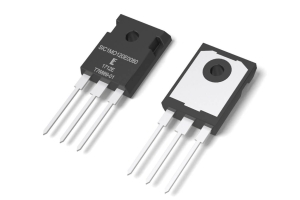
Understanding MOSFET: Types, Working Principles, and Applications
on May 30th
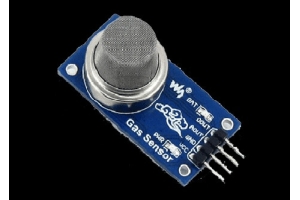
Introduction to Gas Sensors: Construction, Types and Working
on May 28th
Popular Posts
-

What is GND in the circuit?
on January 1th 2946
-

RJ-45 Connector Guide: RJ-45 Connector Color Codes, Wiring Schemes, R-J45 Applications, RJ-45 Datasheets
on January 1th 2502
-

Fiber Connector Types: SC Vs LC And LC Vs MTP
on January 1th 2091
-

Understanding Power Supply Voltages in Electronics VCC, VDD, VEE, VSS, and GND
on November 9th 1898
-

Comparison Between DB9 and RS232
on January 1th 1765
-

What Is An LR44 Battery?
Electricity, that ubiquitous force, quietly permeates every aspect of our daily lives, from trivial gadgets to life-threatening medical equipment, it plays a silent role. However, truly grasping this energy, especially how to store and efficiently output it, is no easy task. It is against this background that this article will focus on a type of coin cell battery that may seem insignificant on the...on January 1th 1714
-

Understanding the Fundamentals:Inductance Resistance, andCapacitance
In the intricate dance of electrical engineering, a trio of fundamental elements takes center stage: inductance, resistance, and capacitance. Each bears unique traits that dictate the dynamic rhythms of electronic circuits. Here, we embark on a journey to decipher the complexities of these components, to uncover their distinct roles and practical uses within the vast electrical orchestra. Inductan...on January 1th 1662
-

CR2430 Battery Comprehensive Guide: Specifications, Applications and Comparison to CR2032 Batteries
What is CR2430 battery ?Benefits of CR2430 BatteriesNormCR2430 Battery ApplicationsCR2430 EquivalentCR2430 VS CR2032Battery CR2430 SizeWhat to look for when buying the CR2430 and equivalentsData Sheet PDFFrequently Asked Questions Batteries are the heart of small electronic devices. Among the many types available, coin cells play a crucial role, commonly found in calculators, remote controls, and ...on January 1th 1567
-

What Is RF and Why Do We Use It?
Radio Frequency (RF) technology is a key part of modern wireless communication, enabling data transmission over long distances without physical connections. This article delves into the basics of RF, explaining how electromagnetic radiation (EMR) makes RF communication possible. We will explore the principles of EMR, the creation and control of RF signals, and their wide-ranging uses. The article ...on January 1th 1550
-

CR2450 vs CR2032: Can The Battery Be Used Instead?
Lithium manganese batteries do have some similarities with other lithium batteries. High energy density and long service life are the characteristics they have in common. This kind of battery has won the trust and favor of many consumers because of its unique safety. Expensive tech gadgets? Small appliances in our homes? Look around and you'll see them everywhere. Among these many lithium-manganes...on January 1th 1519
